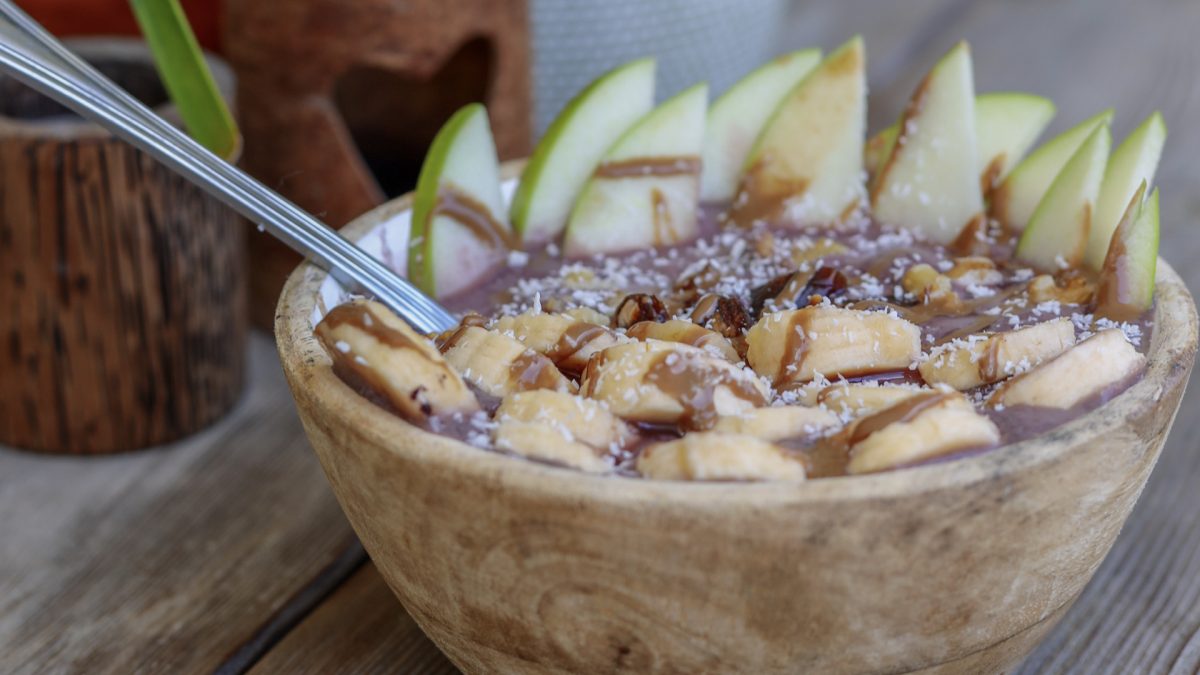There are so many açaí products on the market now, from frozen pulp in smoothie packs to freeze-dried powder and supplements. How is it eaten traditionally? “In the Brazilian Amazon, the Indian tribes of the forest cut down the tree and eat the palm heart…then urinate on the rest of the tree to attract a species of palm beetle to lay its eggs inside the tree. Several weeks later, they return to harvest 3–4 pounds of beetle grub larvae….” I think I’ll just stick to my smoothie pack.
“Despite being used for a long time as food and beverage” in the Amazon, açaí berries have only been researched scientifically since the beginning of this century. A number of years ago, I reviewed that research in my video Clinical Studies on Açaí Berries, starting with in vitro studies showing that açaí could kill leukemia cells in a petri dish at levels you might expect to find in the bloodstream after eating one or two cups of açaí pulp and could also cut the growth of colon cancer cells in half.
Unfortunately, as I discuss in my video The Antioxidant Effects of Açaí vs. Apples, subsequent published studies have failed to find such benefits for that particular type of colon cancer, a different type of colon cancer, or an estrogen-receptor negative form of breast cancer. An açaí extract did appear to kill off a line of estrogen-receptor positive breast cancer cells, but to achieve that level of açaí nutrients in your breast, you’d have to eat about 400 cups of açaí pulp.
The problem with many of these petri dish studies is that they use concentrations that you could never realistically achieve in your bloodstream. For example, as you can see at 1:48 in my video, açaí berries may exert a neuroprotective effect, blocking the buildup of amyloid fibers implicated in Alzheimer’s—but only at a dose reached by drinking about 2,000 cups at one time. They may also have an anti-allergy effect or decrease bone loss—at a mere 1,000 cups a day.
In my previous video Clinical Studies on Açaí Berries, I also talked about a clinical study in which subjects were asked to drink less than a cup a day of açaí in a smoothie. They appeared to get significant improvements in blood sugar, insulin levels, and cholesterol. Now, there was no control group and it was a small study, but there’d never been a bigger study trying to replicate it until a study published in 2016.
As you can see at 2:37 in my video, researchers gave subjects the same amount of açaí for the same duration as the previous study, but they found no significant improvements in blood sugars, insulin, or cholesterol. Why did this study fail to show the benefits seen in the first study? Well, this study was publicly funded with “no conflicts of interest,” while the first study was funded by an açaí company, which always makes you suspect that perhaps it was somehow designed to get the desired result. And, indeed, the participants in that first study were not just given açaí smoothies, but they were explicitly told to avoid processed meat, “for example bacon and hot dogs.” No wonder their numbers looked better at the end of the month. Now, the new study did find a decrease in markers of oxidative stress in the participants’ bloodstreams, a sign of how rich in antioxidants açaí berries can be.
Those who hock supplements love to talk about how açaí consumption can “triple antioxidant capacity” of your blood. And, if you look at the study they cite, you’ll find that the antioxidant capacity of participants’ blood did actually triple after eating açaí—but the same or even better tripling was achieved after consuming just plain applesauce, which the researchers used as a control that happens to be significantly cheaper than açaí berries or supplements. You can see the graph at 3:42 in my video.
A new study has shown significant improvements in artery function after eating açaí berries, but are they any more effective than other common fruits and vegetables? You can learn more about that in my video The Benefits of Açaí vs. Blueberries for Artery Function.
What’s so great about antioxidants? Check out:
- Antioxidants and Depression
- Treating Asthma with Fruits and Vegetables
- Food Antioxidants and Cancer
- Food Antioxidants, Stroke, & Heart Disease
- Antioxidant-Rich Foods with Every Meal
- Minimum “Recommended Daily Allowance” of Antioxidants
- Blueberries for a Diabetic Diet & DNA Repair
Where else can you get them? See Flashback Friday: Antioxidants in a Pinch and Antioxidant Power of Plants vs. Animal Foods.
What are the nutritional aspects of those grub-kabobs? See Bug Appétit: Barriers to Entomophagy and Good Grub: The Healthiest Meat.
In health,
Michael Greger, M.D.
PS: If you haven’t yet, you can subscribe to my free videos here and watch my live presentations:
- 2019: Evidence-Based Weight Loss
- 2016: How Not To Die: The Role of Diet in Preventing, Arresting, and Reversing Our Top 15 Killers
- 2015: Food as Medicine: Preventing and Treating the Most Dreaded Diseases with Diet
- 2014: From Table to Able: Combating Disabling Diseases with Food
- 2013: More Than an Apple a Day
- 2012: Uprooting the Leading Causes of Death
